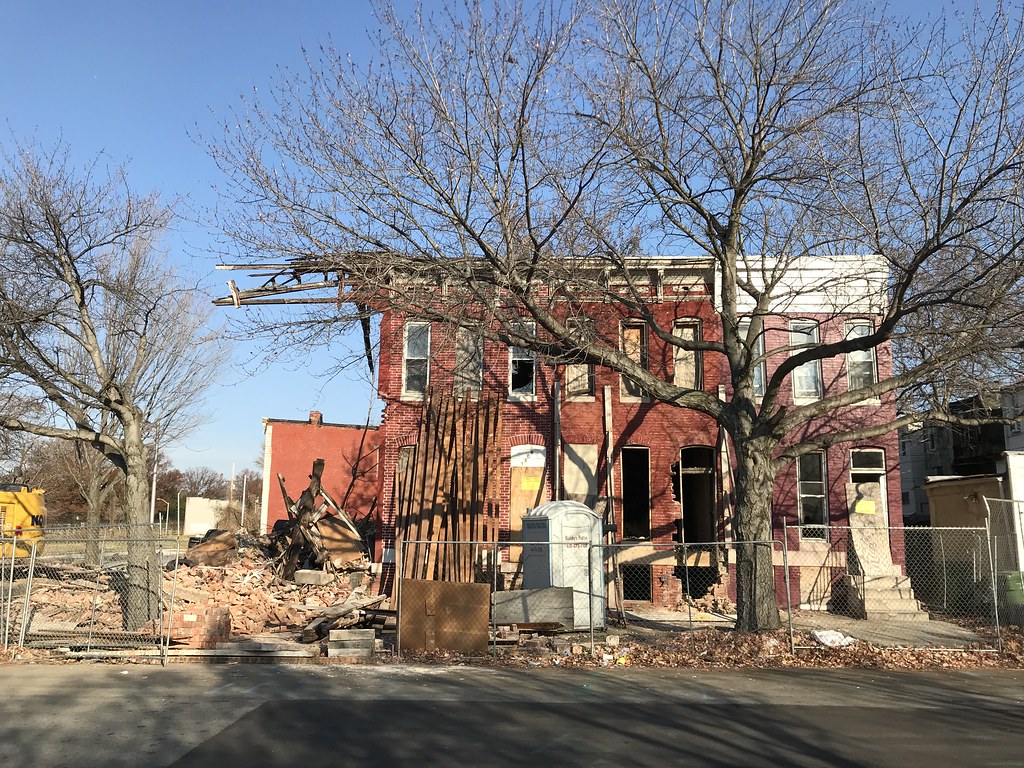This spring, I’ll be presenting a paper at the 2018 Vernacular Architectural Forum on the meaning, history, and politics of demolition in Baltimore. My presentation is part of a panel, “Erasure in the Urban Vernacular Landscape,” with Susan Garfinkel, David Rotenstein, and Aaron Wunsch.
I’ve already done some research and writing on demolition for Project CORE (see my posts for Baltimore Heritage on the 2016 and 2017 demolition review process). With this paper, I’m hoping to look closer at the recent history of demolition in Baltimore (from the 1970s through the 2000s), conduct a few interviews with residents and policy-makers, and get a better understanding of the neighborhood and urban politics of demolition. If you’re a Baltimore resident and you are interested in talking about your experiences with demolition, please get in touch by email or on Twitter! I’m also sharing project photos on Instagram using the hashtag #baltimoredemolition. Read on for my abstract and I’ll try to share updates as I put together a draft over the next few months.
Decades of demands by local residents and policy-makers to “fix up or tear down” vacant rowhouses in Baltimore, Maryland are expanding under Project CORE, a new program created in 2016 to provide millions in new state funding for local demolition priorities. While the program includes grant funding for stabilization and rehabilitation, the main goal is to erase blocks and blocks of the “blighted” mostly vacant rowhouses concentrated in the historically segregated districts of east and west Baltimore.

Tearing down old buildings while following state and federal preservation law and giving legal due process to private property owners, however, is more complicated than elected officials acknowledge when they promise to make the problems of the past disappear. What room do the politics and policy of demolition leave for residents to mourn the loss of a building or neighborhood? How do residents and advocates envision the benefits of demolition?

In this presentation, I use research on Baltimore’s history of vacancy and demolition and interviews with contemporary neighborhood advocates and public administrations to explain how demolition is experienced and made meaningful by Baltimoreans and their local government.
Reuse
Citation
@online{pousson2017,
author = {Pousson, Eli},
title = {The Politics of “Tear It down”},
date = {2017-11-30},
url = {https://elipousson.github.io/posts/2017-11-30-tear-it-down},
langid = {en}
}